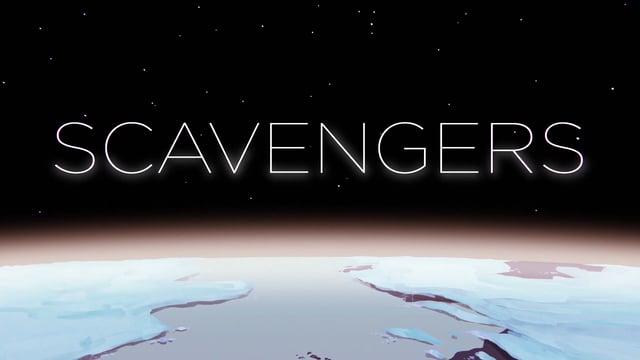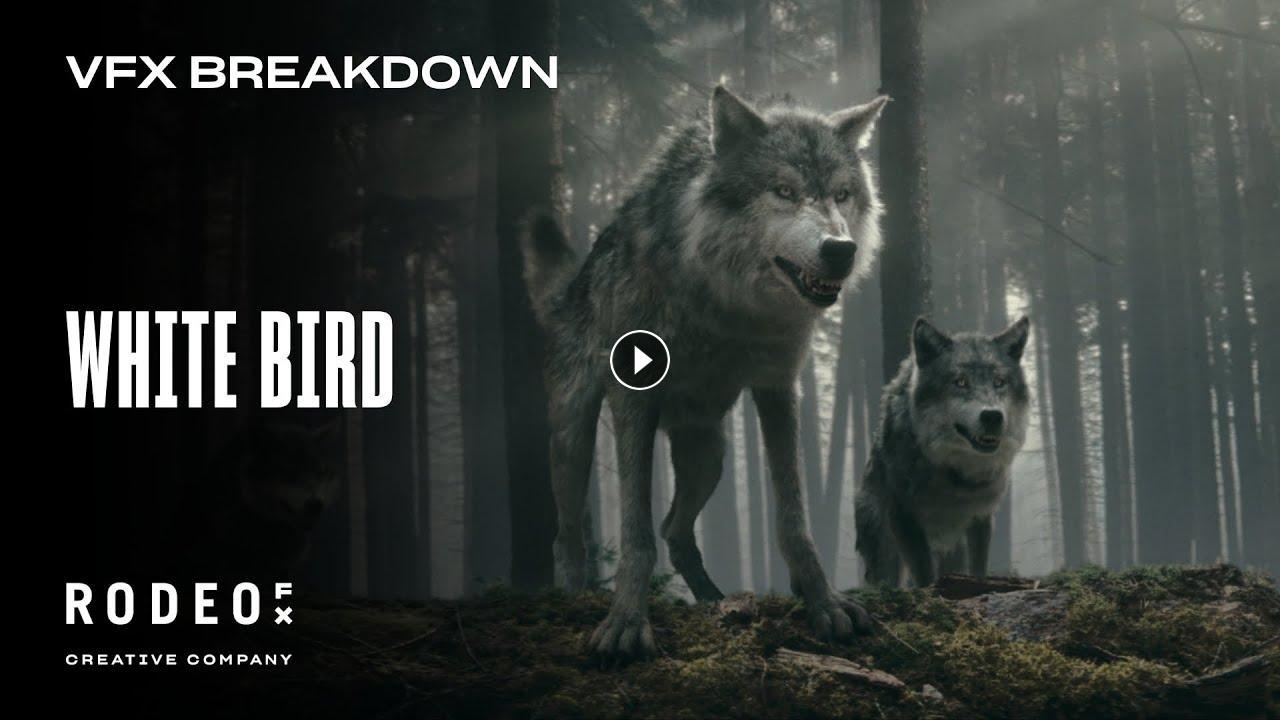After the global success of Wonder, in 2017, we continue exploring the moving stories imagined by author R.J. Palacio in a new movie: White Bird, starring Helen Mirren, Gillian Anderson and Bryce Gheisar. This time, we are plunged into Nazi-occupied France as Grandmère, played by Mirren, tells us a love story marked by war, friendship and acceptance.
There are projects that stand out for their creativity, and others by the bond between the client and the studio. Then there’s White Bird which became a project of unparalleled teamwork, total client trust, and maximum photorealism. The creation of a photorealistic wolf was a task never done by the studio at this scale before, and allowed us to partner with Marc Forster, one of our favourite directors.
The work started with reference footage shot by our team in a snowy wolf refuge in Northern Quebec. These images gave us what we needed in terms of fur, whiskers, and muscle movements to start building. We then created our wolf, making sure to add natural elements to its fur such as water droplets, wood, twigs and leaves. The fur itself required an incredible level of detail to faithfully render the different shades and hair textures that you can find on such a beast.
To assemble the wolf pack, we actually created three different wolves, with an alpha and two betas, each with characteristic body language and matching movement simulations. We finally composited the wolves onto the plate, making sure to have them interact with the falling snow and dead leaves on the ground as they run through the forest and encounter our main character as she faces a Nazi soldier. The fight scene that follows, where the wolves jump onto the soldier, was carefully choreographed and animated to ensure the reactions of the actor and the stunt person shot on set would match the jumps and tugs of the CG animals.
Creating a wolf is a totally different endeavor than a giant fantastic monster. The human eye is extremely discerning and creating a real life creature poses many challenges as audiences are already so familiar with the animal. This requires the asset to faithfully mimic reality, down to the last hair, claw, and tiniest whisker.
There are projects that stand out for their creativity, and others by the bond between the client and the studio. Then there’s White Bird which became a project of unparalleled teamwork, total client trust, and maximum photorealism. The creation of a photorealistic wolf was a task never done by the studio at this scale before, and allowed us to partner with Marc Forster, one of our favourite directors.
The work started with reference footage shot by our team in a snowy wolf refuge in Northern Quebec. These images gave us what we needed in terms of fur, whiskers, and muscle movements to start building. We then created our wolf, making sure to add natural elements to its fur such as water droplets, wood, twigs and leaves. The fur itself required an incredible level of detail to faithfully render the different shades and hair textures that you can find on such a beast.
To assemble the wolf pack, we actually created three different wolves, with an alpha and two betas, each with characteristic body language and matching movement simulations. We finally composited the wolves onto the plate, making sure to have them interact with the falling snow and dead leaves on the ground as they run through the forest and encounter our main character as she faces a Nazi soldier. The fight scene that follows, where the wolves jump onto the soldier, was carefully choreographed and animated to ensure the reactions of the actor and the stunt person shot on set would match the jumps and tugs of the CG animals.
Creating a wolf is a totally different endeavor than a giant fantastic monster. The human eye is extremely discerning and creating a real life creature poses many challenges as audiences are already so familiar with the animal. This requires the asset to faithfully mimic reality, down to the last hair, claw, and tiniest whisker.
- Category
- CG Movie - Making Of


